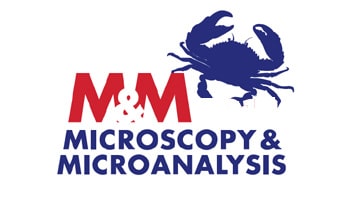Automation Dominates Trends at Microscopy and Microanalysis 2018
The 2018 Microscopy & Microanalysis meeting was held in Baltimore, Maryland, from August 5–9. Registration numbers as of August 8 totaled 2,947 registrants from 40 different countries, a 5% increase, according to organizers. Over 100 vendors exhibited products, and many showcased new or recently released instruments which adhered to a trend of automation and higher-resolution systems.
New Products
Keyence showcased its 3D laser scanning confocal microscope, the VK-X series, which was introduced four months ago. The microscope enables high-accuracy 3D measurement over a large area (16 times larger than conventional microscopes), with a maximum of 6,000X without digital zoom and up to 10,00X with digital zoom. It features fully automated measurements. The violet laser version, which offers higher resolution, is priced close to $200,000, while the red laser version has a starting price of $140,000. The company has also upgraded its BZ-X700 fluorescence microscopy system to the BZ-X800, allowing users higher-throughput analysis capabilities. This instrument’s main application is live cell imaging, and it can hold up to 384 samples in a well plate. The system price starts at $50,000.
German-based Zeiss presented APEER, a cloud-based digital microscopy tool that aims to provide customers with an integrated solution for imaging analysis. Microscopy users are able to automatically process images by creating application workflows for 3D reconstructions, staining or segmenting. The system drives collaboration between scientists, as results can be seen by colleagues in different geographic locations. The workflows can run with any input, from an image pre-loaded in a computer to one taken with a microscope in a remote location. Applications range from basic research to advanced industry R&D.
Hitachi High-Technologies launched the SU7000 FE-SEM, featuring a chamber for large specimens and 18 accessory ports. The SU7000 FE-SEM also has the ability to generate an analysis from various signal types, while a new detector enhances precision and increases throughput. The microscope can be used for structural observations, compositional analysis and nanotechnology, among other applications. The company expects to sell around 150 units annually.
At the meeting, Thermo Fisher Scientific released its Lumis EBSD detector for the identification of new materials and analysis of their structures. Featuring advanced optics and a sensor that collects more than 2.2 megapixels, which surpasses many of its competitors on the market, the detector can gather data at several thousand frames per second. Its main applications are in geophysics and metallurgy, but other disciplines studying structural transformations can also benefit from it. The company additionally launched its Phenom Pharos desktop SEM. Including a field emission gun, the user-friendly system expands Thermo Fisher Scientific’s SEM capabilities, adding a desktop model that can be attractive to a new audience.
In addition to a variety of new products, companies shared other news, such as JEOL, which told IBO that it will open the new JEOL Nanotechnology Center at the University of Pennsylvania on August 10. This is the second JEOL Nanotechnology Center, the first being the Center at the University of California, Irvine.
Scientific Presentations
More than 30 scientific presentations in analytical sciences, biological sciences and physical sciences were held at the conference. Jon Larsen and Manu Prakash, PhD, presented the plenary session. The former is the author of In Search of Stardust, the first comprehensive popular science book on micrometeorites. Mr. Larsen shared how high-resolution color optical microscopy took his work to a new level, allowing him to see differences between micrometeorites, which was not possible with other technologies. More than 100 metric tons of micrometeorites fall to earth each day and can be found everywhere. Mr. Larsen funded “Project Stardust,” a community-based program to allow anyone to conduct field work and lab analysis to document their own discovery of micrometeorites.
In his talk, Dr. Prakash discussed why “Every Child in the World Should Carry a Microscope in Their Pocket.” His laboratory at Stanford aims to invent novel tools for “frugal science” to help solve global health issues and expand access to the scientific experience. Priced at under a dollar and made primarily of paper, his Foldscope has 140X resolution. More than 50,000 Foldscopes have been distributed already among 135 countries.
Microscopy & Microanalysis 2019 will be held August 4–8 in Portland, Oregon.





